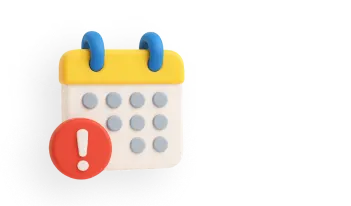What is Debit Card - Meaning, Benefits, Types, Fee & How to Get a Debit Card
A debit card is a convenient banking instrument facilitating customers to make secure payments to merchants and institutions directly from their accounts. Debit cards enable a wide range of cashless transactions for various financial transactions.
Know what a debit card is, how it works, its types, eligibility requirements, fees, benefits, and more.
What is Debit Card?
Debit card is an electronic payment card issued by a bank or a financial institution to its account holders. The users can make electronic payments online or offline using a Point of Sale (POS) terminal or card swipe machine. When a payment is made with debit cards, the recipient of the payment is paid directly by the bank accounts associated with the card.
Debit cards are issued when a person opens a savings or current account with a bank. They are also commonly referred to as ATM cards. They can be used for cash withdrawals at ATMs or kiosks, swiping for in-store purchases, or making secure online payments. They are also highly convenient for international travel, eliminating the need to carry physical cash. However, they do not have the option to borrow funds or get credits.
Debit Card Benefits
The various debit card benefits are as follows:
- Debit cards provide easy access to money without having to carry large amounts of cash. They are accepted almost everywhere at retail stores, restaurants, and on the internet.
- Because debit cards allow you to spend only the balance in your bank account, they promote responsible spending and prevent you from going into unnecessary debt.
- With debit cards, you have the ability to withdraw cash, view your balance, and carry out other operations using ATMs at any given time, hence convenient in emergencies.
- Debit cards have security features such as PIN protection. In case of loss or theft, you can immediately report the problem to your bank to block the card and avoid unauthorised use.
- Each purchase and ATM withdrawal you make with a debit card is reflected in your bank account statement, allowing you to monitor expenditures and keep track of finances.
- Debit cards are accepted both domestically and internationally, making them a practical payment option for travellers and those shopping with overseas retailers.
- Many debit cards offer added benefits like insurance, cashback, discounts, and rewards, giving cardholders extra value.
How to Get a Debit Card?
When you open a savings, current, or salary account with a bank, it automatically issues a debit card. However, if you do not receive a debit card upon opening an account, you can request the bank to issue a debit card of your choice against your account by filling out the card request form or submitting the card issuance form through the Internet banking portal.
Once you receive the card, you will need to activate it and set a PIN. You will be required to enter this PIN to complete the process securely for every transaction or cash withdrawal.
How Does a Debit Card Work?
Debit Card Offline Payment
Payments can be made from a debit card offline through a POS or card swipe machine provided by the seller or institute to which you want to pay money. The debit card needs to be inserted or swiped into the machine.
The amount is entered in the machine. After the amount is entered, you will need to enter your PIN to authorise the transaction. A notification will confirm the successful completion of the payment.
Debit cards with NFC (Near-Field Communication) technology allow contactless payments. Here there is no need to enter the PIN. The payments can be made by tapping or waving the card to the machine.
Debit Card Online Payment
In order to make online payments via debit cards, you must select the method of payment as card payment on the payment portal. Next, you must enter your name, 16-digit card number, card expiry date, and CVV (Card Verification Value) for verifying the transaction.
After you have entered the information, an OTP will be sent to your registered mobile number for authentication. After you enter the OTP, the payment will be completed. You can also keep your card information safely stored via tokenisation, which substitutes your card details for a unique number. This maximises security with no unauthorised access possible and fewer threats from fraud with faster one-click payments.
Debit Card ATM Withdrawal
You can withdraw money from your account using a debit card by visit an atm. Insert your debit card to the ATM machine in the goven slot. Enter the desired amount, input your PIN, and collect your cash. Retrieve your card from the machine after colloecting cash or when the machine prompts your to remove card.
Types of Debit Card
Each bank issues various types of debit cards, each having different features. Various types of debits cards are provided below.
Visa Debit Cards
Visa debit cards offer international acceptance, allowing consumers to make domestic and foreign transactions. The cards are issued by banks or financial institutions affiliated with Visa Payment Network. They are secure and convenient means of accessing funds in-person, online, or abroad.
Some Visa debit card options include:
- Visa Signature Debit Card
- Visa Gold Debit Card
- Visa Classic Debit Card
- Visa Infinite Debit Card
- Visa Platinum Debit Card
MasterCard Debit Cards
MasterCard debit cards are accepted globally and can be used for ATM withdrawals and online purchases. Transactions made with these cards are directly debited from your bank account. They also provide detailed monthly transaction records.
Some options include:
- World Delite Elite MasterCard
- Standard Debit MasterCard
- World Debit MasterCard
- Platinum Debit MasterCard
RuPay Debit Cards
RuPay debit cards, developed by the National Payments Corporation of India, are a domestic payment service applicable only to transactions within India. Compared to other international card providers such as Visa and MasterCard, RuPay charges a lower processing fee, and transaction times for RuPay are also much faster. RuPay cards can only be used for domestic ATM withdrawals and online payments.
Various types of RuPay debit cards include:
- RuPay Platinum Debit Card
- RuPay Mudra Debit Card
- RuPay PMJDY Debit Card
- RuPay Classic Debit Card
- RuPay Kisan Card
Contactless Debit Cards
With Contactless debit cards, users can carry out transactions of up to a certain limit (e.g. Rs. 5,000) without having to enter their PIN. RFID and NFC technologies are used, and with a contactless-enabled POS terminal, cashless payment can be made by tapping or waving the card.
Maestro Debit Cards
Maestro debit cards available for use all over the world. They can be used for online transactions and ATM cash withdrawals like MasterCard debit cards. Funds can easily be accessed and are also recognised internationally regarding secure payments.
Debit Card Fees
Fees and charges associated with debit cards can vary depending on the bank and the specific card type. Below are the common charges applicable to debit cards in India:
- Annual Maintenance Fee: Depending on the bank, using a debit card entails an annual fee that typically ranges from Rs. 100 to Rs. 5,000.
- Card Replacement Fee: There might be fees if you need to get a new debit card. While some banks charge a replacement fee for both lost and damaged cards, others do not charge fees for physically damaged cards. The fee usually varies from Rs. 100 to Rs. 300, depending on the bank's policies.
- Duplicate PIN or PIN Regeneration Fee: For a small fee of between Rs. 50 and Rs. 100, you can ask to have a duplicate PIN for your debit card sent to your registered address if you can't remember it.
- Cash Withdrawal Expenses: With debit cards, unlimited number of free withdrawals can be made with ATMs only from the issuing bank; however, this is not the same with ATMs of other banks. ATM transactions outside the free limit generally incur charges.
- Charges for Foreign Transactions: Using debit card overseas entails charges from foreign exchanges and fees for the balance inquiries or cash withdrawals. These fees may be flat-rate or a certain percentage of the total amount transacted.
- POS Fee: Debit card transactions mostly do not involve costs but a surcharge of a percent of about one percent is usually applied to fuel-related transactions.
Eligibility for Debit Card
Certain eligibility conditions applying to savings and current accounts are required for an individual to qualify for a debit card. The other requirements are as follows:
- The applicant must be a citizen of India.
- An individual must be over 18 years old.
- The bank must be furnished with a proof of identity and proof of address.
- The account holder must maintain the minimum balance as specified by the bank.
Documents Required for Debit Card
The documents needed to open a bank account also apply to obtaining a debit card, with no additional documents required. Here is a list of documents required for a debit card include:
- Address proof such as specified by the driving licence, passport, or voter ID card
- Identity proof such as an Aadhaar card, passport, voter ID card, driving licence, etc,
- PAN card or Form 16
- Two recent passport-sized photographs
Debit Card Example
An example of a debit card is the Axis RuPay Platinum Debit Card which comes with various attractive features such as a high transaction limit of up to Rs. 2,00,0000, discounts on e-commerce platforms and food delivery apps, persona; accident insurance cover, and lounge access at airport.
What Is Debit Card PIN?
A debit card PIN (Personal Identification Number) is a unique number that secures your payment. This PIN is required for making online payments, in-store purchases, and withdrawing cash from ATMs using your debit card.
Typically consisting of four digits, the PIN acts as a password for making payments through the debit card. Customers can set a PIN that is easy to remember but difficult for others to guess.
What to do if Debit Card is Lost?
Your debit card acts almost like cash in your hand, though more safer and convenient. Depending on your immediate location, in the case your card is lost or stolen, please do not panic and contact your bank right away.
You can call the bank’s customer service number and block it. You can even block your card via the mobile app or online portal. The bank may also freeze the card to prevent unauthorised use in case of its misplacement.
Debit Card Lost Application
When your debit card is lost or stolen, you need to block your card immediately. After your card is blocked, you need to write an application for the issuance of a duplicate debit card. You can visit the bank branch and write a lost debit card application, submit it to the bank officials, and request a duplicate debit card issuance. You can also apply for a duplicate credit card online through the Internet banking portal.
A debit card is like having instant access to your bank account funds wherever you go. It allows you to make payments for various transactions, such as shopping, hotel bills, e-commerce purchases, bill payments, etc. You can make secure payments with the debit card PIN.
Related Articles:
1. How to Insert an ATM Card into an ATM Machine?
2. How to Activate an ATM or Debit Card?
3. What Is It & How to Know CVV Number on a Debit Card
4. ATM Withdrawal Limit
5. What is White Label ATM
6. How to Unblock an ATM card?
Frequently Asked Questions



